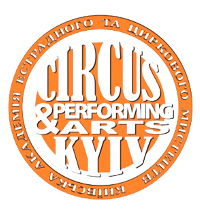Аpproaches to creation of digital twins for use in AR/VR galleries
Abstract
The article analyzes different ways and technologies that can be used to create a so-called “digital twin” (digital copy) of a physical real-life art object and assesses their suitability for AR/VR applications, based on existing examples of digitized items that are considered to be part of cultural heritage, either local or global. One of primary issues for any digitisation process is that of faithful recreation of the original, which can be achieved in multiple ways ranging by price, complexity and quality of the result. Some approaches discussed in this article, can be utilized almost universally, with little regard to the type of the object to be scanned, while others have limitations arising from equipment’s capabilities, properties of the material the art piece is made of or even considerations about possible damage to the scanning equipment. In some cases we would need to combine several different techniques to receive the result that satisfies our project’s requirements and/or goals. However, before choosing our work process, we also have to take into consideration the application or in other words - the desired use case of our digital copies. As such, the primary concern for the purpose of this article is on the analysis of the available tools and techniques, from the standpoint of balanced cost/quality ratio in relation to fairly constrained use cases of virtual gallery spaces, both offline and online. VR/AR technologies place yet another restriction on our review, because it is highly not advised to use highest quality assets when creating experiences intended to be experienced with the aid of VR or AR and especially standalone headsets (meaning they do not need external processing equipment). This review also is limited to technologies known to be capable of producing results with consistent and repeatable quality levels as getting good results early on in the project’s life cycle allows us more room for any edits.
References
2. Brewster, R. & dotPDN LLC. (n.d.). Paint.NET – Free Software for Digital Photo Editing. Paint.NET - Free Software for Digital Photo Editing. Available at: https://www.getpaint.net/ [in English].
3. Emmrich, J. F. & Medit. (n.d.). What Is Structured Light Scanning? What Is Structured Light Scanning? Available at: http://surl.li/pvpnxu [in English].
4. Flynn, T. (n.d.). CC0 – A 3D model collection by Thomas Flynn (@nebulousflynn). Sketchfab. Available at: http://surl.li/gnuwix [in English].
5. Full Collection|Scan The World. (n.d.). Full Collection|Scan the World. Available at: http://surl.li/zchtdr [in English].
6. GIMP. GIMP – GNU Image Manipulation Program. Available at: https://www.gimp.org/ [in English].
7. Harwood, M. 6 Best Scanners For Artwork In 2024 (Read Before You Buy!). Dark Yellow Dot. Available at: http://surl.li/ffioxh [in English].
8. Hermary. (n.d.). 3D Measurement Techniques (Part 1)| Hermary. Available at: http://surl.li/uectyc [in English].
9. Hermary (n.d.). Principles of Laser Triangulation | Learn About Machine Vision|Hermary. Available at: http://surl.li/ztdebs [in English].
10. Image Access (n.d.). WideTEK® 36ART-600 large format scanner designed to scan fine art : Image Access 2024. WideTEK&Reg; 36ART-600 Large Format Scanner Designed to Scan Fine Art : Image Access 2024. Available at: http://surl.li/ronkff [in English].
11. KEYENCE (n.d.). 3D Laser Scanners vs. 2D Laser Scanners|KEYENCE America. 3D Laser Scanners Vs. 2D Laser Scanners|KEYENCE America. Available at: http://surl.li/gvzbdp [in English].
12. Krasnow, B. Antique 4x5 camera creates 20 micron photolithography masks: Super tiny tax form [Video]. YouTube. Available at: http://surl.li/wcgxby [in English].
13. Nationalmuseum (n.d.). Nationalmuseum @nationalmuseumswe – MyMiniFactory. Nationalmuseum @Nationalmuseumswe – MyMiniFactory. Available at: http://surl.li/szevpn [in English].
14. Pavlidis, G. (2006). Laser scanning and Triangulation. Laser Scanning and Triangulation Available at: http://surl.li/vqtnjl [in English].
15. Prescient Technologies (2019, February 19). Types & Benefits of 3D Scanners and 3D Scanning Technologies. Available at: http://surl.li/sybhmu [in English].
16. Price, G. (2020, February 29). Cultural Heritage: 1700+ 3D Scans and Models (Public Domain, CCO) Now Available via Sketchfab. Library Journal infoDOCKET. Available at: http://surl.li/yfsija [in English].
17. SCANTECH (2024, February 1). What is structured light 3D scanning? – Scantech. Scantech. Available at: http://surl.li/ikovps [in English].
18. Search – Google Arts & Culture (n.d.). Search — Google Arts & Culture. Available at: http://surl.li/kkvnda [in English].
19. Sketchfab (2020, February 25). Sketchfab Launches Public Domain Dedication for 3D Cultural Heritage. Sketchfab Community Blog. Available at: http://surl.li/sphjej [in English].
20. Smithsonian 3D Digitization. (n.d.). Open Access|3D Digitization. Open Access | 3D Digitization. Available at: https://3d.si.edu/cc0 [in English].
21. SMK – Statens Museum for Kunst. (n.d.). SMK – Statens Museum for Kunst @SMK – Statens Museum for Kunst – MyMiniFactory. SMK – Statens Museum for Kunst @SMK – Statens Museum for Kunst – MyMiniFactory. Available at: http://surl.li/zcvkex [in English].
22. Snihur, V. (2020, June 17). Infinity – VSnihur Art. Infinity – VSnihur Art. Available at: http://surl.li/mexgnm [in English].
23. Snihur, V. (2022, January 29). Brave New World – VSnihur Art. Brave New World – VSnihur Art. Available at: http://surl.li/lqiczh [in English].
24. Snihur, V. (2024, March 16). Snails in Akashi – VSnihur Art. Snails in Akashi – VSnihur Art. Available at: http://surl.li/kkznus [in English].

 ISSN
ISSN  ISSN
ISSN 



